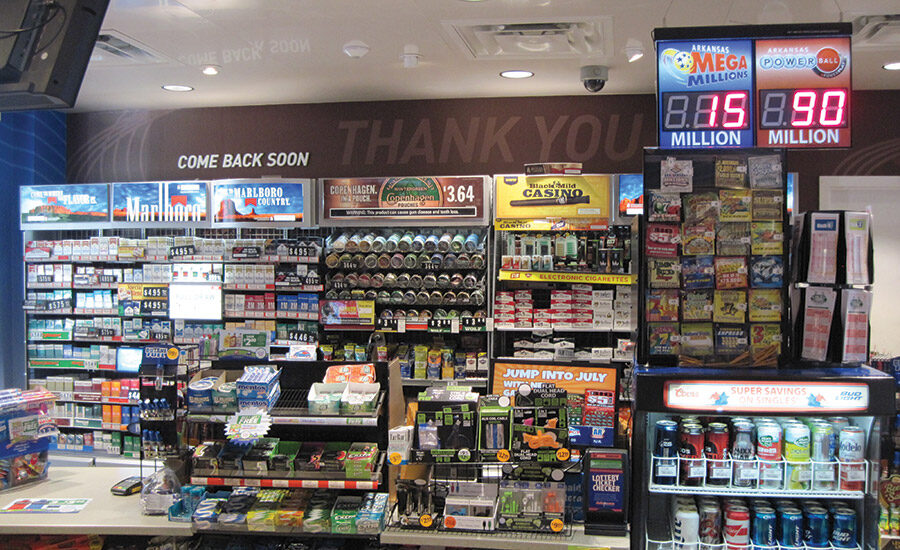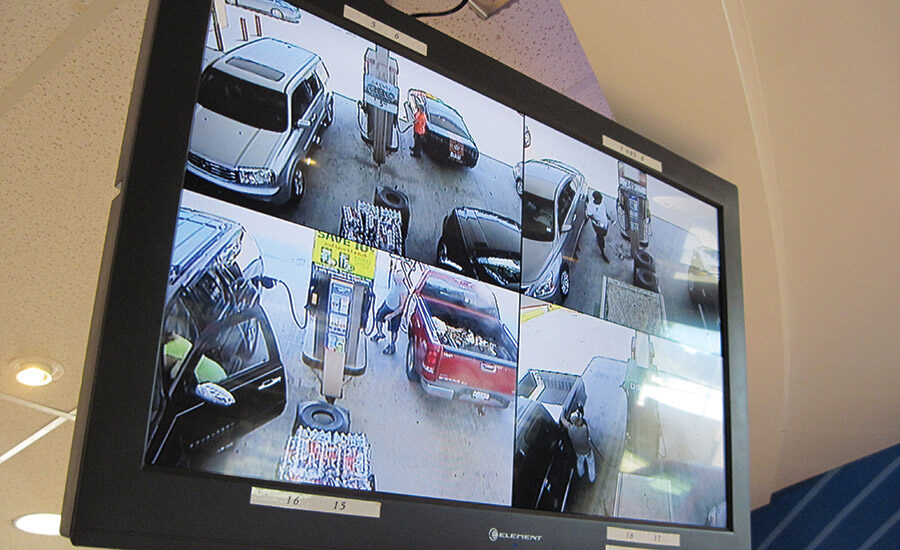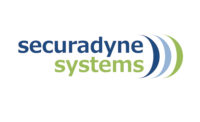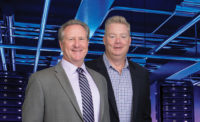Own the Store — Or as Much of It as Possible

Given the propensity for theft or incidents to occur at cash registers, integration between point of sale and video systems tops retailers’ list of desired solutions.
PHOTO COURTESY OF 3XLOGIC

Deploying monitors within view of both customers and staff can serve as a deterrent and also represents another solution that can be integrated into a more complete retail solution.
PHOTO COURTESY OF 3XLOGIC


In recent years, if you asked security integrators and manufacturers which vertical segments offered the greatest opportunities, retail would no doubt be at or near the top of the list. Now, thanks in large part to the migration to new credit and debit card technology, this may be more true than ever before.
Banks and credit card companies have been issuing new cards that include an embedded smart chip, in addition to the traditional magnetic stripe, to provide greater protection against identity theft and fraud. This change means retailers everywhere need to replace their magnetic stripe-only card readers with new devices that also can read those embedded chips. For the security integrator who is involved in swapping out these devices for his retail customers, this opens the door for conversations about additional deployments and/or upgrades.
“Right now there is a tremendous refresh going on around the upgrade to credit cards with a more secure chip in them. As millions of card reader devices are being replaced, many retailers are also using this as an opportunity to rethink their entire IT infrastructure or certain components of IT. Because of that churn, the opportunity is great for a lot of resellers,” says Greg Dixon, chief technology officer, ScanSource, Greenville, S.C.
Savvy integrators who recognize and pursue these opportunities stand the best chance of moving beyond security to install, maintain and provide services for a wider range of integrated solutions and systems that can deliver measurable return on investment (ROI) for their retail customers while also growing their own bottom line. All it takes, Dixon says, is asking a few simple questions about a retailer’s current systems to uncover potential needs for upgrades or additional solutions.
It also requires integrators to change their mindsets about how they present themselves to customers and potential customers.
“If you want to sell into the retail vertical, which is rich and ripe, instead of saying you’re a POS professional or a security integrator, you have to say you’re a reseller of complex retail IP solutions,” Dixon says. “All of these things are just IP end points, so you have to have the mindset that, ‘If it’s IP, it belongs to me,’ which was a brilliant comment I heard from my friend Karl Palachuk.”
Case in point: Indianapolis-based Stanley Security has in the past focused on traditional security solutions, but that focus has evolved into a more holistic, integrated systems approach based on market demand, says John Rosman, president of the company’s retail division.
“As we’ve talked with our retail customers, the conversation has started to move toward leveraging existing systems to get meaningful data and make better business decisions,” he says. “The opportunities are there because there are a lot of systems in place, but they’re not talking to each other and there’s no way to collect the data.”
These are some of the most common and in-demand solutions integrators can deploy in addition to security as they pursue the goal of owning a larger piece of the retail pie.
Point of Sale
One of the most requested, if not required, functions retailers want is the ability to monitor for POS exceptions, especially those related to returns, which is a common way employees can steal from stores. A retailer might want to know when returns over a certain amount are processed, when sales are canceled, when a particular item is purchased and/or returned, or any number of criteria. So it stands to reason that integration between POS and video is a must-have in the retail space.
“Integration to the POS system is key because most theft comes at the register. Providing some way to correlate video to transactions is the most important thing loss prevention people look for,” says Charlie Erickson, vice president of product management, 3xLogic, Denver. “With a clean integration, they won’t spend as much time on investigation.”
A potential rub is that POS integration could prove difficult for security professionals who lack experience with the technology or don’t have a solution partner that can simplify the process, Dixon says.
“POS is the most complicated because it’s a complex application with a lot of moving parts. It’s the hardest system to move to the cloud; it involves payments and price lookup, and there are all sorts of variations that go with it,” he says. “I would say to someone that if you want to own all the IP-based systems in a store, POS is probably the one you’re going to have the biggest challenge with.”
Electronic Article Surveillance
Tags attached to clothing, stickers affixed to high-value electronics, and even technology that’s designed to not be seen at all are components of EAS systems, which exist mainly to deter shoplifting. If an item with an activated tag goes out the door, a sensor at the exit will sound an alert. Sometimes it’s because a cashier forgot to deactivate the tag, but often it’s not. And if a store is particularly busy or understaffed, a shoplifter might be able to avoid apprehension even if the alarm sounds.
Integration with video and other systems strengthens the effectiveness of the EAS system, providing images associated with every alarm. These can be cross-referenced with EAS data from the tag, as well as POS data about purchases of those items that occurred close to the time of the alarm. This provides tremendous value not only to that retailer for investigating crimes but also benefits other retailers in the area or within the same chain.
“A lot of times, a BOLO (be on the lookout) about a shoplifter in the area will come from another retailer. They’re very collaborative with how they share data among themselves, so having integrated systems and tools that allow them to easily create and share is as important as the loss prevention piece,” Erickson says.
In addition to embedding RFID in price tags or EAS tags, use of the technology has been extended beyond simply addressing theft and loss.
“The best loss prevention professionals are as concerned about sales as theft,” says Kevin Lynch, executive director of business development, Tyco Integrated Security, Boca Raton, Fla. “We’re seeing RFID integrations that enhance customer service, such as readers embedded in intelligent mirrors in dressing rooms. They know what someone brought in based on its RFID tag and know what to recommend that would go with those items as a way of upselling.”
Lynch says “RFID is a mercurial technology” that is “part art and part science that requires understanding the nuances of making it work in uncooperative environments, such as Lowe’s or Home Depot, where there is a lot of metal that could potentially interfere with signals.” But once the particulars of a location have been worked out, the ability to track inventory from a distribution center to a stockroom to a sales floor and then out the door after a purchase is valuable to retailers, providing a “chain of custody” for inventory.
Advertising & Marketing Solutions
Marketing professionals and departments are being brought into initial conversations with integrators more often than in the past, primarily because systems traditionally deployed for security have the potential to provide business intelligence data that can be used to increase sales. Much of this is due to video analytics, which can track the number of people who enter a store, where they go within the store, how long they linger in a particular location how long they wait in line to make a purchase and many other criteria.
“Retailers spend a lot of money to come up with signs and advertising, but how do they know if they’re working? What percentage of people come into the store stop and pay attention and consider buying a particular product?” says Dan Cremins, director, product line management, March Networks, Ottawa. “With video analytics, you can come up with a threshold, say if someone comes in and lingers for 30 seconds. If 1,000 people come in and 100 stopped by a new sign, your marketing conversion rate is 10 percent.”
Tying in POS data demonstrates the effectiveness of featured products and displays, which can be extremely helpful for both retailers and their vendors.
“If a vendor has paid for an end cap display, you can use heat mapping and people-counting analytics to look at traffic patterns to generate concrete data to bring back to vendors to demonstrate the effectiveness of that end cap. That shows them value — and it’s backed up with video and POS data,” Lynch explains.
While cost is a main factor in any purchases, these types of applications help shift the conversation away from “How much does it cost?” to “How much is it worth?” says Tom Cook, vice president of sales and marketing, Samsung Techwin America, Ridgefield Park, N.J.
“Price is obviously going to be an issue, but it’s also about how to get the most out of that camera,” he says. “Management always wants to know what they’re going to get out of the system, and analytics can help demonstrate that by showing the value of new signage or displays and more.”
Facility Management
Retail margins tend to be fairly slim, so there is a high level of interest in anything that can help reduce overhead. That’s why some smaller retailers have begun integrating solutions that traditionally fall under home automation, such as Z-Wave, to integrate thermostats and lighting with their alarm system to save money by controlling heating and electricity costs.
“A retail chain just can’t have someone go to every store to check the thermostat. With Z-Wave, you can access them remotely or set them to work automatically when the alarm system is armed or disarmed to reduce overhead costs, which can be significant across multiple locations,” says Tom Mechler, applications design manager, Bosch Security, Fairport, N.Y.
Practical Advice
For integrators working in the retail space, it can be helpful to frame the conversation as more than security, perhaps leaving security out altogether in the beginning.
“Without mentioning video security, find out what problems they’re trying to solve. You don’t want to corner yourself into being just a security provider. Focus on the overall business problem they’re trying to solve,” Cremins says. “People may have other issues but don’t know video can help with some of those things. That opens the door to more.”
It’s also important not to assume that a customer knows that there are unified systems to solve their problems and that your company can provide them. “There aren’t a lot of retailers who come out and ask for integrated systems and solutions. They may not see us as the person who can provide it, but we do have these solutions,” Rosman says.
“We have a dedicated product manager — one person for one account to serve as the day-to-day contact for our customers. Their first responsibility is to keep the customer happy and well informed,” says Mike Dunn, vice president of business development – video division for Delray Beach, Fla.-based Best Security Industries. “Post-sale, it’s all about constant communication; it’s not a one-and-done project.”
Lastly, and perhaps most importantly, an integrator’s success with integrated retail solutions depends on the knowledge and skillset of its employees. This is especially true of the sales staff, because the selling process has changed. (See “The Evolution of Sales” on this page.)“If you don’t keep up with the latest technology and have skilled sales technicians, you’re going to be left behind,” Rosman says.
Simplifying Integrated Solutions |
Video by Demand |
The Evolution of Sales |
MORE ONLINE
For more on the topic of technologies for retail security, please see these related articles.
“Security’s Role in Business Intelligence”
“3 Video Analytics any Retailer can use to boost Their Bottom Line”
Looking for a reprint of this article?
From high-res PDFs to custom plaques, order your copy today!









